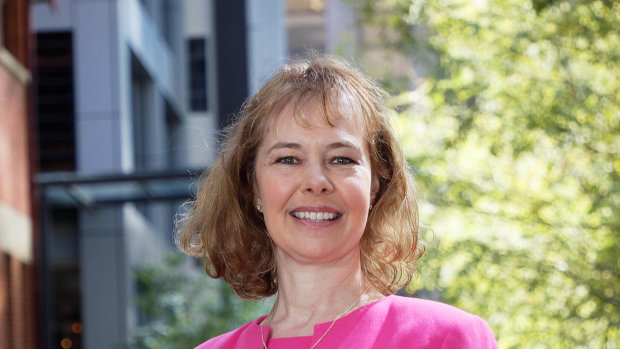Drop the old energy paradigm, says battery pioneer
The Australian Financial Review

Energy storage expert Christina Lampe-Onnerud is optimistic about batteries facilitating the energy transition. Trevor Collens
“We have to look at this really differently; it comes down in the end to how serious we are about this threat and opportunity,” she said in an interview during a visit to Australia to participate in CRC meetings.
“We will not be able to achieve this if we look through the same lens that we have had for years; if we are stubborn about protecting the current paradigm, we know 100 per cent we will fail future generations.”
Dr Lampe-Önnerud, who co-chairs the World Economic Forum’s Global Future Council on Energy Technologies, said providing transparency on the real costs of different forms of energy would expose the “fable or myth on the street” that some traditional energy sources are cheap.
She suggested that decisions on where industries – particularly energy-intensive industries – are located may need to be considered from a global perspective. That could mean that energy-intensive plants such as aluminium smelters are sited in countries with cheap, round-the-clock hydroelectricity, for example, while Australia capitalises on its “enormous opportunity” in solar power and storage, with international trading to smooth out the equation.
“I don’t think I am willing to say this is the industry that will profit in Australia specifically – that is too specific – but in general we have to think about how we use electricity and how we use energy,” she said.
“And even if you look at aluminium, do we need to use aluminium the way we do? Can we use it differently? Can we reshape and innovate in this?”

“It’s much more fun to be part of a transition than to be dragged through by others or by other factors,” said Dr Lampe-Önnerud, who is the founder and chief executive of Cadenza Innovation, a New England-based developer of safe and low-cost lithium-ion battery technology.
Cadenza last year inked a licensing agreement with Australia’s Energy Renaissance that will lead to Cadenza cell batteries optimised for a hot climate being produced in Australia under licence.
Dr Lampe-Önnerud, who met representatives of NSW distributor Ausgrid, Fortescue Metals Group, West Australian utility Synergy and Wesfarmers during her visit, pointed to the opportunity for utilities to cut greenhouse gas emissions and operating costs by investing in batteries rather than in ramping existing plants up and down.
She said the work of the Future Battery Industries CRC, which received $25 million in federal government funding last year, would help with transparency and exchange of information and data to inform smarter decisions on investment.
“We have a chance to stimulate all this interest and curiosity around energy storage to not only make the existing utilities more reliable and potentially find operating gains and also lower cost, but to make them more sustainable,” she said.
“It’s a slow and gradual transition where we can use the economic framework that we have right now in place and we just add the sustainability metric as one of the levers for decision-making.”
Dr Lampe-Önnerud pointed to Australia’s summer bushfires as potentially a “moment of truth” in the public consciousness about the impact of climate change here. That could drive a re-evaluation of the transition to clean energy, possibly bringing it forward to well before the 2040 or 2050 dates that some coal power plants are due to operate until.
